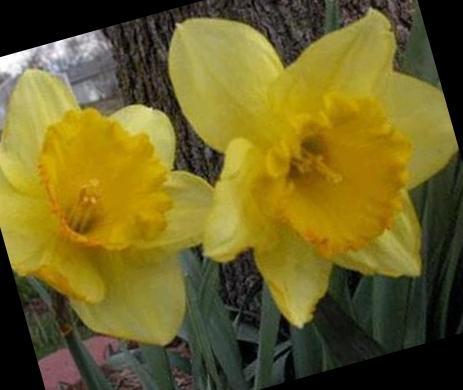Image augmentation
Requirements#
Requires the image-dataset-converter-imgaug library.
Download the 17 flowers object detection VOC XML dataset and extract it.
Plugins#
Convert VOC XML to YOLO (crop/rotate)#
The following converts VOC XML annotations into YOLO ones. It also augments the
dataset with randomly adding cropped/rotated images to the stream (-m add),
with the annotations getting processed accordingly:
idc-convert \
-l INFO \
from-voc-od \
-l INFO \
-i "./voc/*.xml" \
crop \
-m add \
-f 0.1 \
-t 0.2 \
-u \
rotate \
-m add \
-f "-45" \
-t 45 \
to-yolo-od \
-l INFO \
-o ./yolo-split-augmented \
--labels ./yolo-split-augmented/labels.txt \
--split_names train val test \
--split_ratios 70 15 15
Here is an example of a processed image (image_0001.jpg):

Convert VOC XML to MS COCO (resize)#
The following converts VOC XML annotations into smaller MS COCO ones, using a maximum width of 300 while keeping the aspect ratio intact. The data also gets split into train/validation/test:
idc-convert \
-l INFO \
from-voc-od \
-l INFO \
-i "./voc/*.xml" \
resize \
-W 300 \
-H keep-aspect-ratio \
to-coco-od \
-l INFO \
-o ./coco-split-small \
--split_names train val test \
--split_ratios 70 15 15
Split images into smaller ones#
With the sub-images filter it is possible to split images into smaller ones or extract
just specific regions of interest from images. The idc-generate-regions tool can be used
to generate regions for a set number of rows/columns or fixed row heights/column widths.
For images that are at maximum 800x800, we can generate regions for a 2x2 grid as follows:
idc-generate-regions \
-l INFO \
-W 800 \
-H 800 \
-r 2 \
-c 2
Will output this, with each quadruplet consisting of x, y, width and height:
0,0,400,400 400,0,400,400 0,400,400,400 400,400,400,400
These regions we can now use with the sub-images filter to generate smaller images:
idc-convert \
-l INFO \
from-voc-od \
-l INFO \
-i "./voc/*.xml" \
sub-images \
-l INFO \
-r 0,0,400,400 400,0,400,400 0,400,400,400 400,400,400,400 \
-p \
-e \
to-yolo-od \
-l INFO \
-o ./yolo-sub \
--labels ./yolo-sub/labels.txt
Using -p we will keep partial annotations, ones that got cut off a bit, and with -e we
will suppress images that have no annotations in them.
Using the meta-sub-images filter, you can feed the small images that were generated
through the specified base filter. The output of this filter gets reassembled and forwarded.
This base filter can be a simple filter or a more complex pipeline, which passes the
images through a Redis model, for instance.